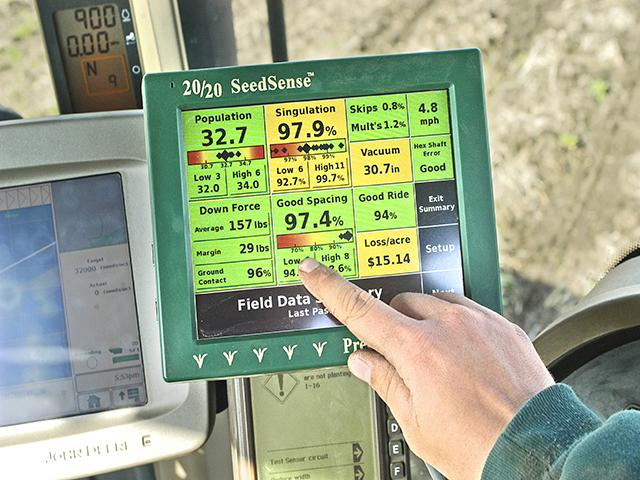Rural Broadband Funding and Use Grow
Farmers in Some States Relying More Heavily on Rural Broadband for Precision Ag
OMAHA (DTN) -- As farmers increase their use of the internet to buy inputs and apply for precision agriculture, the federal government continues to roll out more grant and loan funds to expand rural broadband access.
USDA is rolling out $667 million through its fourth major funding round for the ReConnect internet program, which includes $493 million in grants and another $174 million in loans. The funding comes as more than 50% of farmers in at least a handful of states report using the internet for precision agriculture.
The funding in this round will go to 22 states and to Marshall Islands.
Monday's broadband announcement follows USDA releasing $714 million in funds back in June.
Agriculture Secretary Tom Vilsack plugged the importance of the grant funding announced because it allows internet providers to offer more affordable pricing plans to families in those communities.
The secretary also said rural broadband helps tie into the Partnership for Climate-Smart Commodities as well to help farmers reduce their emissions, sequester carbon and, ideally, create a market for higher value for their commodities. These programs also will seek to collect data from producers.
"To do that is going to require a lot of technology that will absolutely depend on high-speed internet access," Vilsack said, adding, "It's not just limited to climate-smart commodities, it's also an opportunity to build out a local and regional food system, which will allow farmers to negotiate prices for purchasers of food in their local communities, whether it's a school or an institutional purchaser, or maybe it's a food bank."
Vilsack and White House officials held a call with reporters on Friday to champion the latest rounds of broadband spending by the administration. Mitch Landrieu, an adviser to President Joe Biden, tied the investments to "the heart of Bidenomics." Landrieu said the country now is making "the largest investment in infrastructure since the 1950s and '60s." Landrieu also tied rural broadband investments to rural electrification in the 1930s.
P[L1] D[0x0] M[300x250] OOP[F] ADUNIT[] T[]
The Biden administration overall is spending $90 billion on high-speed internet infrastructure, including $65 billion that came from the Bipartisan Infrastructure Law passed in 2021.
Landrieu and Vilsack stressed the importance of expanding rural broadband to help with education, rural health care such as telemedicine and farmers engaging in precision agriculture.
The funding for the program requires recipients to ensure the internet services they are delivering in the rural areas have at least a minimum download speed of 100 Mbps.
FARM TECHNOLOGY
The funding announcement comes after USDA on Aug. 17 released a Farm Technology use report showing 85% of farmers nationally have access to the internet. At least 32% of producers this year also reported using the internet to buy inputs for their farm, up about 3% from 2021, the last time USDA conducted a similar survey. The survey received responses from about 14,000 farm operations, USDA stated.
About 51% of farmers use the internet through a broadband connection while 75% of internet-connected farms had access to a cellular plan.
Looking at precision agriculture, 27% of farmers surveyed said they are "using precision agriculture practices to manage crops or livestock." That's up 2% nationally from 2021. States with the highest use of precision tools include North Dakota (57%), Nebraska (55%), Iowa (54%), South Dakota (53%) and Illinois (51%).
While more farmers have access to technology in rural areas, only about 13% of producers surveyed nationally use the internet to access USDA crop reports, and 20% use the internet to access other USDA services, a 2% decline from 2021.
States with farmers reporting the lowest access to internet on their farms included Arizona (65%), Pennsylvania (66%), Ohio (69%) West Virginia (74%) and Virginia (79%).
Landrieu plugged that one of the funding projects in Nobles County, Minnesota, would provide high-speed internet to 679 farms. "It's going to enable farmers in the Nobles County area to engage in precision agriculture and make their work more sustainable."
LEGISLATION CHANGES PROPOSED
U.S. Sens. Michael Bennet, D-Colo., and Ted Budd, R-N.C., last week introduced the Connecting Our Neighbors to Networks and Ensuring Competitive Telecommunications (CONNECT) Act. The bill would make it easier for smaller providers to apply to the ReConnect program as well as reduce some of the red tape for rural communities by shortening the required permitting deadlines. The bill would set up an office to help with technical assistance, provide some smaller grants to communities and prioritize applications from local governments and non-profits. A companion bill is also being introduced in the House. The senators highlighted some of the problems they hear with the ReConnect program.
"The USDA's ReConnect Program has already helped bridge the digital divide in North Carolina, but the application process remains complicated and expensive. This makes it harder for small, rural providers to get projects approved. I'm proud to partner with Sen. Bennet on bipartisan legislation that will make it easier for more Americans to get access to affordable, high-quality internet," Budd said.
Vilsack said the ReConnect program has another $260 million left from the infrastructure law that will be invested during the next several months.
NASS study on farm computer usage: https://release.nass.usda.gov/…
Full list of projects funded in this round of ReConnect funding: https://www.rd.usda.gov/…
Chris Clayton can be reached at Chris.Clayton@dtn.com
Follow him on X, formerly known as Twitter, @ChrisClaytonDTN
(c) Copyright 2023 DTN, LLC. All rights reserved.



